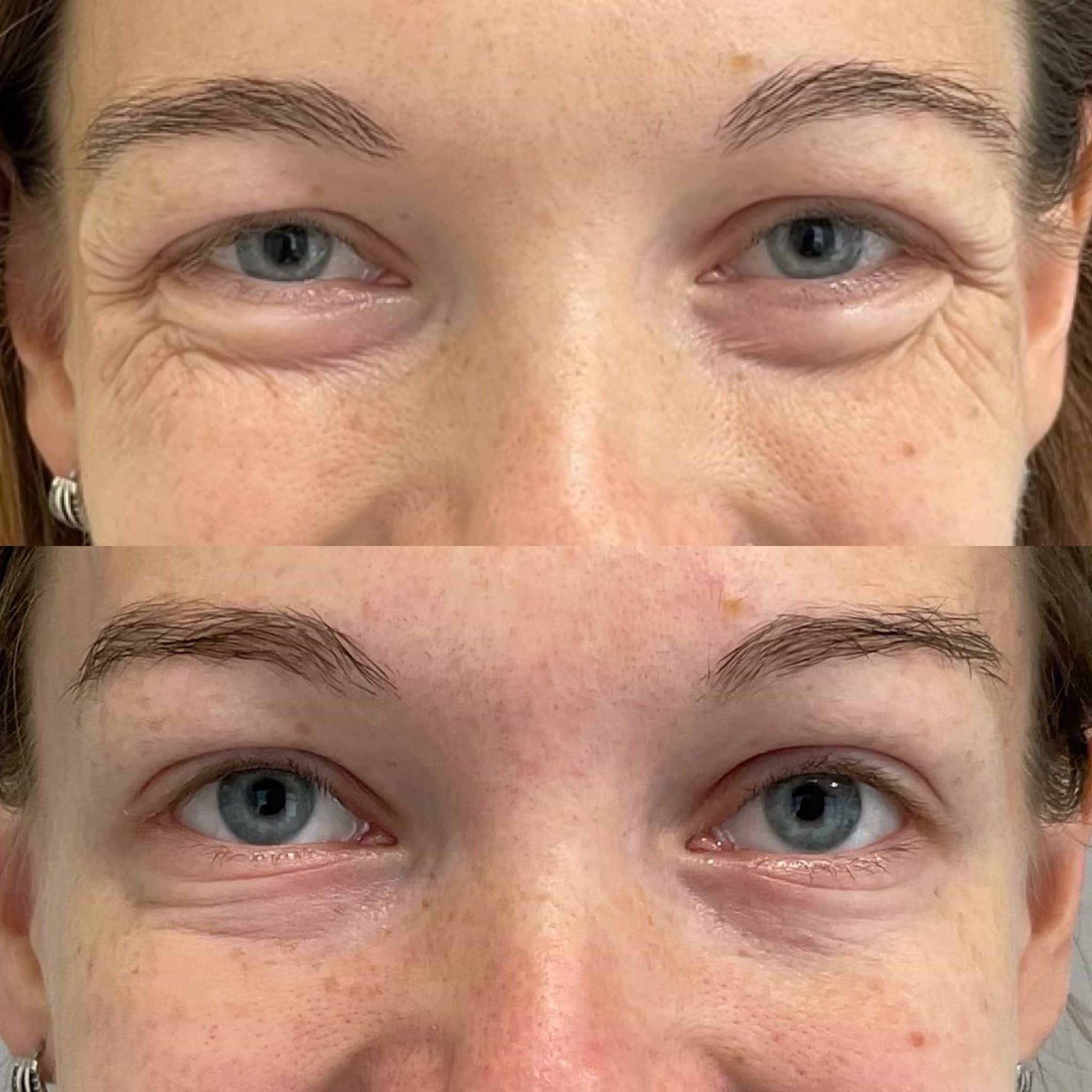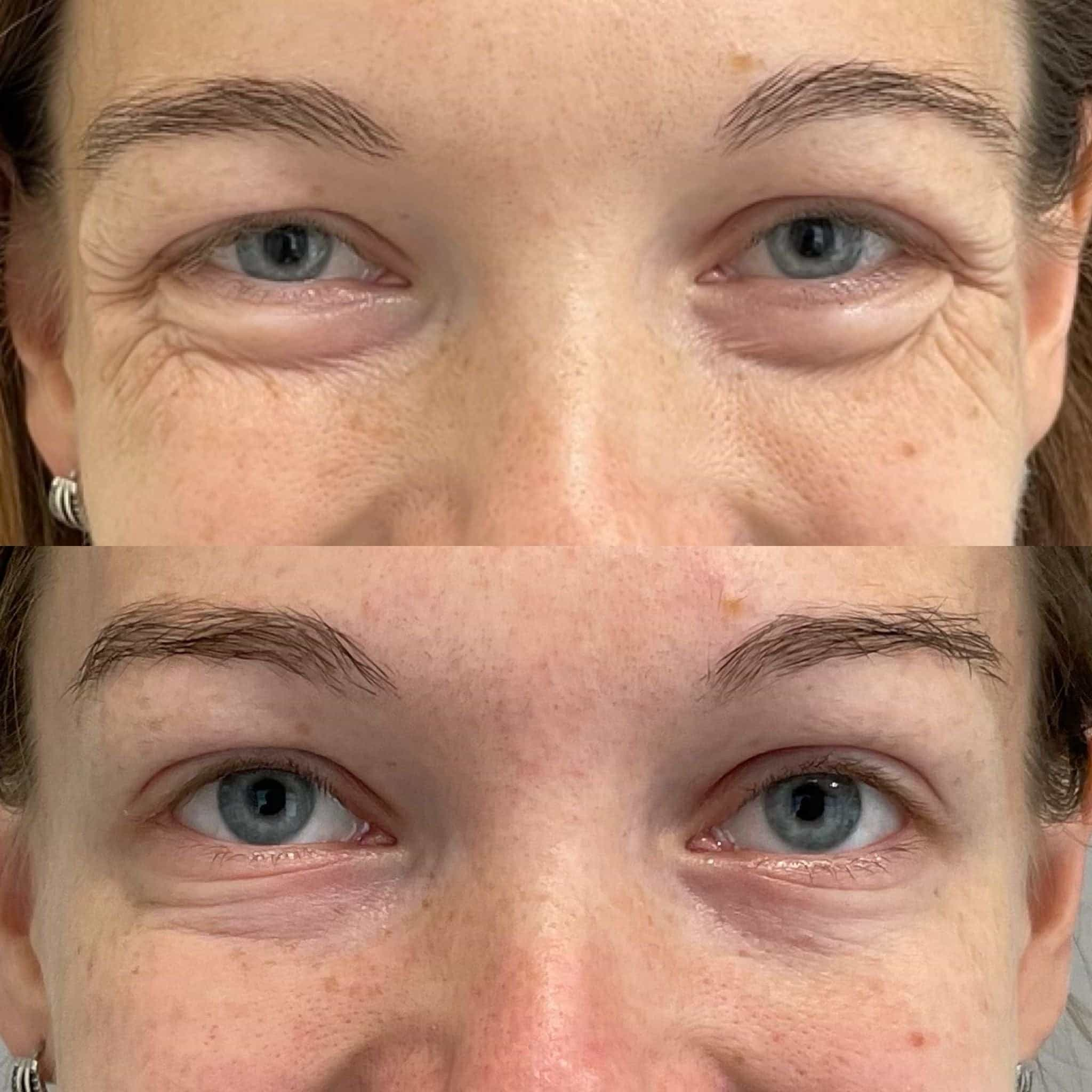Causes of Crow’s Feet
Crow’s feet, those fine lines that radiate from the outer corners of the eyes, are a common sign of aging. These wrinkles are formed by repeated muscle contractions, sun exposure, and the natural loss of collagen and elastin in the skin.
Skin Aging
Crow’s feet, those fine lines that radiate from the outer corners of the eyes, are a common sign of aging. These wrinkles are formed by repeated muscle contractions, such as smiling or squinting, which over time cause the skin to thin and wrinkle. Sun exposure is another major contributor, as ultraviolet (UV) rays damage collagen and elastin, the proteins that give skin its firmness and elasticity.
As we age, our bodies naturally produce less collagen and elastin, leading to a gradual loss of skin volume and suppleness. This makes the delicate skin around the eyes more susceptible to wrinkling.
Other factors that can contribute to crow’s feet include genetics, smoking, and dehydration.
Sun Exposure
Crow’s feet, those fine lines that radiate from the outer corners of the eyes, are a common sign of aging. These wrinkles are formed by repeated muscle contractions, such as smiling or squinting, which over time cause the skin to thin and wrinkle.
Sun exposure is another major contributor, as ultraviolet (UV) rays damage collagen and elastin, the proteins that give skin its firmness and elasticity.
Here are some ways sun exposure contributes to crow’s feet:
- UV radiation breaks down collagen and elastin fibers in the skin.
- This breakdown leads to loss of skin elasticity, making it more prone to wrinkling.
- Sunburn can also damage the skin, accelerating the aging process and increasing wrinkle formation.
Facial Expressions
Crow’s feet are formed by repeated muscle contractions, such as smiling or squinting. These actions cause the skin around the eyes to thin and wrinkle over time.
Sun exposure is another significant factor in their formation. Ultraviolet (UV) rays damage collagen and elastin, which are proteins responsible for skin’s firmness and elasticity.
As we age, our bodies naturally produce less collagen and elastin, leading to a loss of skin volume and suppleness. This makes the delicate skin around the eyes more vulnerable to wrinkling.

Genetics, smoking, and dehydration can also contribute to the appearance of crow’s feet.
Genetics
Crow’s feet are primarily caused by a combination of repeated facial muscle contractions, sun exposure, and the natural aging process.
Genetics plays a significant role in determining an individual’s predisposition to developing crow’s feet. Some people may inherit genes that make their skin thinner or more prone to wrinkling around the eyes.
While lifestyle factors like sun exposure and smoking can accelerate wrinkle formation, genetics sets the stage for how susceptible someone is to these changes.
Treatment Options for Crow’s Feet
Fortunately, there are various treatment options available to minimize the appearance of crow’s feet.
Topical Treatments
Topical treatments utilize creams and serums containing active ingredients to improve skin texture and reduce the appearance of fine lines. Retinoids, derived from vitamin A, are known for stimulating collagen production and improving cell turnover. Vitamin C, a powerful antioxidant, helps protect skin from sun damage and brightens complexion. Hyaluronic acid draws moisture into the skin, plumping it up and minimizing the look of wrinkles. Other ingredients like peptides and ceramides can also contribute to firmer, smoother skin.
Retinoids
Retinoids are a popular treatment option for crow’s feet due to their ability to stimulate collagen production and increase cell turnover. Collagen is a protein that provides structure and elasticity to the skin, and as we age, our bodies produce less of it. Retinoids help to replenish collagen levels, which can help to reduce the appearance of fine lines and wrinkles.
Retinoids come in various forms, including creams, gels, and serums. They are available both over-the-counter and by prescription. It’s important to start with a low concentration and gradually increase it as your skin tolerates it. Retinoids can cause sensitivity to the sun, so using sunscreen daily is crucial.
Antioxidants
Antioxidants play a crucial role in protecting skin from damage caused by free radicals, unstable molecules that contribute to aging and wrinkles. Free radical formation is accelerated by environmental factors like UV radiation, pollution, and smoking.
Antioxidants neutralize these free radicals, preventing them from causing damage to skin cells and collagen fibers. Vitamin C, a potent antioxidant, helps protect against sun damage and promotes collagen production, improving skin elasticity.
Vitamin E is another antioxidant that protects against sun damage and moisturizes the skin. It also has anti-inflammatory properties, which can help soothe irritated skin.
Chemical Peels
Chemical peels are a popular treatment option for crow’s feet. During a chemical peel, a solution containing acids is applied to the skin, causing the top layers of skin to exfoliate and reveal smoother, younger-looking skin underneath. Different types of chemical peels target different depths of the skin.
Superficial peels, using mild acids like glycolic acid or salicylic acid, can improve skin texture, reduce fine lines, and minimize pigmentation. Medium-depth peels, which penetrate deeper into the skin using trichloroacetic acid (TCA), offer more dramatic results in reducing wrinkles and improving overall skin tone.
Deep peels, involving stronger acids like phenol, are typically used for more severe wrinkles and can significantly reduce their appearance. However, they require a longer recovery period and should only be performed by experienced dermatologists.
Fillers

Fillers are injectable substances that can effectively reduce the appearance of crow’s feet. These substances, often hyaluronic acid-based, work by plumping up the skin and filling in wrinkles.
Hyaluronic acid is a naturally occurring substance in the body that attracts and holds moisture. When injected into the skin, it adds volume and smooths out wrinkles, including those around the eyes.
Laser Treatments
Laser treatments are a popular option for addressing crow’s feet.
These treatments use focused light energy to stimulate collagen production, improve skin texture, and reduce the appearance of fine lines.
Different types of laser treatments target different layers of the skin and achieve various results.
Ablative lasers, such as carbon dioxide (CO2) lasers, remove the outer layer of skin, promoting new collagen growth and significantly reducing wrinkles.
Non-ablative lasers, like fractional lasers, target deeper layers of the skin without causing significant surface damage. They stimulate collagen production and improve skin texture without extensive downtime.
Botox
Botox is a popular treatment for crow’s feet. It works by temporarily paralyzing the muscles that cause wrinkles around the eyes.
When injected into these muscles, Botox blocks the nerve signals that stimulate muscle contractions. This prevents the muscles from contracting and forming wrinkles.
The effects of Botox typically last for three to six months.
Discover the crow’s feet treatment that works for you at It’s Me & You Clinic with Dr. Laura Geige.
- The Best Clinics For Bum Filler Injections In The UK - December 5, 2025
- The Benefits Of CBD Gummy Bears For Muscle Recovery - December 3, 2025
- THC Seltzers As A Healthier Alternative To Alcoholic Drinks - December 1, 2025
